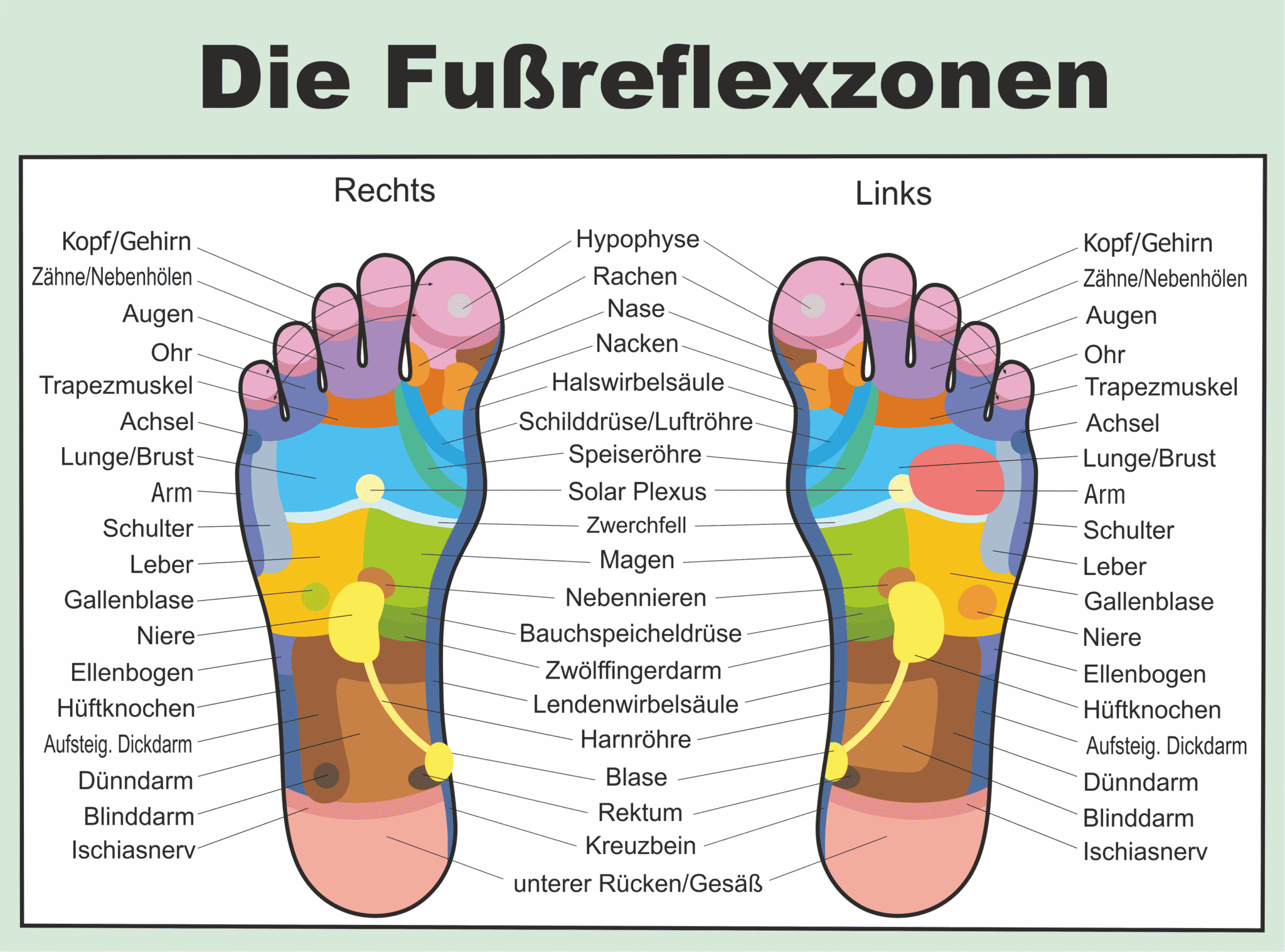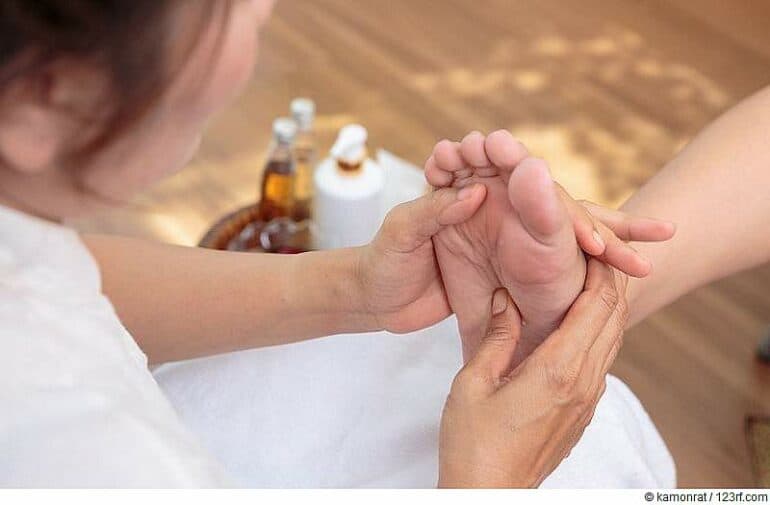Where does reflexology come from?
Evidence of the use of reflexology can be found in ancient Egyptian writings from around 2000 B.C. Ankhmahor was a medical pharaoh in whose tomb the first known reference to reflexology can be found. Even the birth process, embalming and a foot reflexology massage are depicted on his tomb. In hieroglyphic script, pictures of foot and palm reflexology say“Please heal the agony“.
But not only the Egyptians used foot reflexology, other cultures have also left evidence of it. Literally translated from Chinese, the ideogram for “foot” means “health-promoting body component”. In Asia, when depicting the footprint of Buddha, several areas are used to represent different parts of the body. In Indian art, Vishnu’s feet are often elaborately decorated with symbols.
Zone therapy according to Dr. Fitzgerald
At the turn of the century, an American physician named Dr. Fitzgerald became interested in reflexology. As a result, he proposed to divide the human body into 10 different zones according to their orientation along the longitudinal axis of the body. This method is known as zone therapy. In one of the 10 identified body zones, he finds that pressure on a toe or finger has a pain-relieving effect.
It was not until the 1930s that the doctor’s colleague, Eunice Ingham, perfected the identification of the regions and created a map showing the entire body on the hands or feet. From her comes the firstreflexology book (at Amazon) and she also founded the first training center in this field.
Reflexology
Remember that the spleen and all other organs on the left side of the body are connected to the reflex zones in the left foot. The organs on the right side, including the gallbladder, have corresponding points on the right foot. The lungs and other organs that are more central to the body, such as the stomach, are “present” on both feet. An indication of the map’s accuracy is that even the toes are divided into different regions: This means that the pituitary gland would be accessible for interventions along with the tongue, nasal cavity, and esophagus (pituitary gland). By applying pressure to specific areas of the big toe.

The advantages of foot reflexology
The approach is suitable for a wide range of mild diseases, always in addition to medical therapy. The therapeutic possibilities are manifold:
- Musculoskeletal system: traumatology and rheumatism torticollis, epicondylitis, tenosynovitis, back pain, lumbago, sciatica, low back pain, mild osteoarthritis, etc.
- Hormonal system: puberty, menopause, thyroid problems, non-insulin dependent diabetes.
- Cardiovascular system: tachycardia, congestive edema, mild arterial hypertension.
- ENT system: sinusitis, bronchitis, asthma, laryngitis, rhinopharyngitis.
- Cerebrospinal nervous system: trauma to cranial and peripheral nerves.
- Digestive system: hiatal hernia, spastic constipation, gastritis.
- Urinary system: retention, incontinence.
- The skin: eczema, acne, psoriasis.
- Genital system: functional infertility, prostate disease, dysmenorrhea.
- Disorders of the sensory organs: ocular motor function, unilateral tinnitus, dizziness.
- Tension headache, migraine
- Psychofunctional or psychosomatic disorders.
- Pathology of newborns and early childhood: belching, gastroesophageal, pharyngitis, colitis, restlessness or apathy.
Who is allowed to offer foot reflexology?
In the public area, reflexology can be offered by non-professionals. The first step is to establish yourself as a professional massage therapy practice. There are already thousands of people who practice this activity, especially in the foot care, massage, cosmetic, spa and hotel industries.
However, there are certain restrictions on who can practice reflexology as a form of treatment. Medical massages and physical treatments are legal only if prescribed by a physician and performed by a licensed professional. Only licensed physicians and alternative practitioners are legally authorized to perform foot reflexology treatments.
How often should you use a foot reflexology massage?
The number of sessions depends on the particular complaints and the responsiveness of the body. Two or three sessions eight or ten days apart might be a reasonable rhythm to address a particular problem. Otherwise, a visit to your reflexologist every three to four weeks will ensure healthy balance and prevention. You can also schedule a session at the beginning of each season.
Is reflexology painful?
In a foot reflexology session, foot discomfort is one of the indicators to consider. It is often associated with a disturbed reflex zone for the reflexologist and should subside as the disturbances and plantar tissue normalize over the course of the sessions. However, it can also be only a part of the foot that is normally sensitive during reflexology (interdigital areas, periosteum, etc.).

